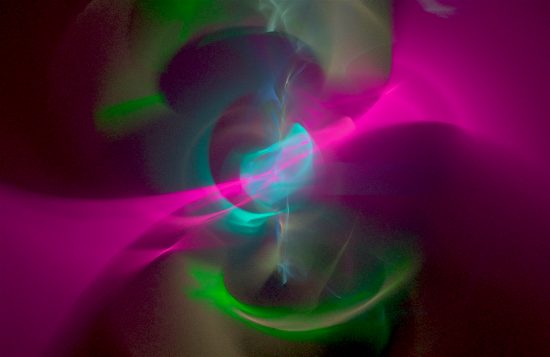
Nov 6, 2019
There are no such things as magnetic field lines in space.
The Voyager 1 spacecraft encountered the Sun’s heliosheath in December 2004, followed by Voyager 2 in August 2007. It was Voyager 1 that first found fluctuations in electron density as it traveled through the heliosphere, while Voyager 2 made similar observations later in 2008. At the time, astrophysicists were surprised by the “frothy magnetic bubbles” that Voyager 1 detected.
Recently, a team from the University of Iowa announced that Voyager 2 is also within the interstellar medium (ISM). An increase in plasma density is evidence that it encountered the higher-density plasma of interstellar space. Voyager 1 previously experienced that plasma density jump.
Since NASA’s computer model of the heliosphere works only if the readings are assumed to come from flying in and out of the aforementioned bubbles, some means for their creation had to be concocted. Enter stage left, the old tried and true, magnetic reconnection.
As a press release from the time states, the Sun’s “twisted and wrinkled” magnetic field lines far out in the heliosphere “bunch up,” causing them to “reconnect” and explosively “reorganize” into long, sausage-shaped bubbles of magnetism.
Retired Professor of Electrical Engineering, Dr. Donald Scott’s admonition about magnetic reconnection should be kept in mind when reading reports about Earth’s interaction with the plasma stream (commonly called the solar wind) and electromagnetic energy radiating from the Sun. He notes that magnetic field lines are only convenient ideas and nothing more. They indicate a magnetic field’s direction. Schematic diagrams consisting of magnetic field lines are useful for visualizing its shape and strength, although lines of force do not exist in space anymore than lines of latitude or longitude do.
Magnetic field lines do not move because they do not exist, since the field is continuous. Consensus opinions ignore that fact and speak of field lines that can move, touch, merge, and “detonate.” Scott’s observation is that if this idea were to be applied to circles of longitude, they would come together and “merge” in the polar regions and could be theorized to be the source of gravitational energy.
There is no such thing as “magnetic merging” or “reconnection” of magnetic field lines in the real world. The energy comes from electrical currents, which can move, touch, merge, and detonate. The cellular structure confining electric currents in space is not directly observable, except by flying a space probe through them. They have been detected on Earth and in near-space.
Charged particles in motion comprise an electric current. That current wraps itself in a magnetic field. As more charged particles accelerate in the same direction the magnetic field gets stronger. A familiar idea to electrical engineers, but when astronomers find magnetism in space they are mystified. They resort to ironic ideas about voids with magnetic fields frozen inside them or so-called “magnetic reconnection.”
Electric Universe advocate Wal Thornhill wrote:
“…plasma in space forms a bubble, known as a ‘virtual cathode’. Effectively it is the heliopause. In plasma terms, the heliopause is not a result of mechanical shock but is a Langmuir plasma sheath that forms between two plasmas of different charge densities and energies…Such ‘bubbles’ are seen at all scales, from the comas of comets to the ‘magnetospheres’ of planets and stars.”
Earth’s magnetospheric “bubble” is known among plasma physicists as a Langmuir sheath. Langmuir sheaths are electrically charged double layers of plasma, in which opposite charges build up near each other, creating an electric field between them. Double layers can accelerate ions to extreme velocities that might easily be misinterpreted as high temperature.
The same conditions are most likely present where the solar magnetosphere, or heliosphere, meets the dissimilar charge of the Interstellar Medium (ISM). Two regions of dissimilar plasma will form a Langmuir sheath between them, which leads to a potential “bubble” formation.
Stephen Smith
The Thunderbolts Picture of the Day is generously supported by the Mainwaring Archive Foundation.












